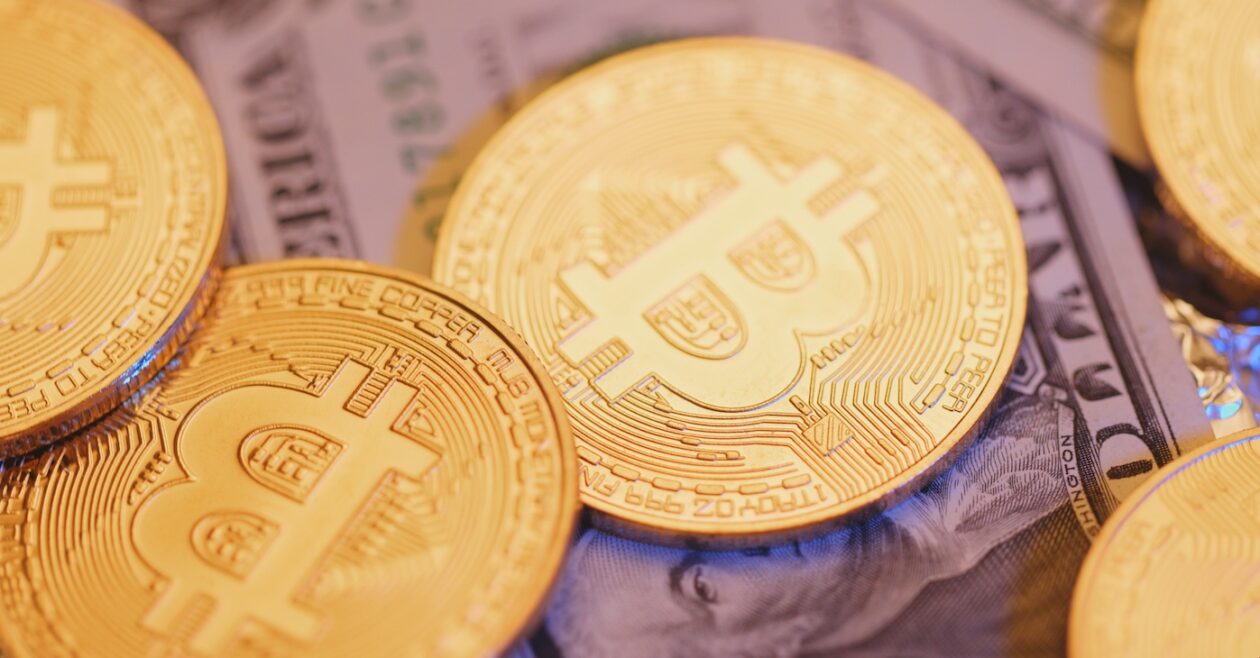Bitcoin gained along with all other top 10 non-stablecoin cryptocurrencies on Friday morning in Asia after data this week showed the U.S. economy expanded even in the face of repeated interest rate hikes. U.S. GDP grew faster than expected in the first quarter and initial jobless claims came in at less than expected. Also, asset manager Fidelity Investments on Thursday filed to offer a spot Bitcoin exchange-traded fund (ETF).
All top 10 cryptos rise
Bitcoin climbed 1.05% to US$30,453 over the last 24 hours to 6:40 a.m. in Hong Kong, according to data from CoinMarketCap. The world’s largest cryptocurrency by market capitalization is up 1.43% over the past seven days.
Ether rose 1.28% to US$1,853, but is down 1.4% for the week.
All top 10 non-stablecoin cryptocurrencies traded higher. Solana led the gains on a 12.35% jump and a 7.56% weekly gain. This despite the Thursday announcement from Cardinal, a Solana non-fungible token (NFT) protocol, that it will be winding down operations due to what it called a challenging macroeconomic environment.
Cardinal tweeted on Thursday that the team will disable new deposit instructions on July 19 and cease operations on features including staking and new NFT rentals.
Elsewhere, Fidelity has refiled an application for a spot Bitcoin ETF. The Thursday filing with the Securities and Exchange Commission (SEC) shows that the COBE exchange has proposed to list and trade shares of the Wise Origin Bitcoin Trust. The SEC rejected a Bitcoin ETF application from Fidelity in 2021.
Fidelity’s move follows a wave of U.S. spot Bitcoin ETF applications submitted by asset managers this month, including BlackRock, WisdomTree, Invesco and Bitwise, indicating institutions are confident in the profit potential of digital assets and demand.
“To this point, the lack of a spot Bitcoin ETP exposes U.S. investor assets to significant risk because investors that would otherwise seek crypto asset exposure through a spot Bitcoin ETP are forced to find alternative exposure through generally riskier means,” the Fidelity filing said.
On Wednesday, investment management fund ARK Invest also filed an amendment to its April application for a spot Bitcoin ETF.
The total cryptocurrency market cap rose 1.24% to US$1.17 trillion, with trading volume dropping 12.22% to US$29.96 billion, according to CoinMarketCap data.
Long-term Azuki collectors sell out
In the NFT market, the Forkast 500 NFT index dipped 0.79% to 2,852.82 in the 24 hours to 10:00 a.m. in Hong Kong. The index is down 1.79% for the week.
NFT trading volume on Ethereum dropped 19.79% to US$20.87 million over the past 24 hours, while volume on the Bitcoin network rose 357.82% to US$13.38 million, according to CryptoSlam data.
Sales of Uncategorized Ordinals — CryptoSlam’s category of Bitcoin Ordinals that are not part of one established collection — rose 7.22% to US$9.25 million, making it the most-sold collection in the past day.
Solana-based SMB Barrel Raffle, which started public minting on Thursday, saw the second-largest daily volume of US$5.1 million.
Trading volume of Azuki Elementals dropped 46.5% to US$2.95 million, and the original Azuki collection saw a 7.76% drop to US$2.79 million.
While the new Azuki Elementals sold out its 20,000 NFTs within 15 minutes when it began minting on Tuesday, collectors were “angry” as the new NFTs looked almost identical to the original Azuki collection, according to Yehudah Petscher, NFT strategist at Forkast Labs, the parent company of Forkast.News. That could potentially devalue the NFT collection as a whole, he said.
“Tonight [on Thursday] the founder of Azuki, Zagabond, is meeting with the community to discuss the week’s mint, and likely address concerns,” Petscher said.
According to data analytics firm Nansen on Twitter on Thursday: “Azuki and Beanz collectors that have held for over 1 year have been selling their NFTs post-Elementals mint.”
Meanwhile, art auction house Sotheby’s plans to launch a new generative art program, or work generated from algorithms. That will be in partnership with Art Blocks, which powers generative minting technology to brands and artists, according to a Wednesday statement shared with Forkast via email.
“This will allow generative art long form collections to be minted right on Sotheby’s own platform,” Petscher said. “Generative art is really beginning to spread its wings following the sale of ‘The Goose’ — The Ringers #879 — for US$5.4 million (US$6.2 million with fees) on June 15.”
China’s economy contracts for third month

Asia equity markets were mixed on the last day of the quarter as investors assessed fresh economic data from the U.S. and China.
U.S. stock futures edged higher as of 11:00 a.m. in Hong Kong. Dow Jones Industrial Average futures edged up 0.01%, S&P 500 futures climbed 0.08%, and Nasdaq Futures added 0.19%.
U.S. economic growth expanded faster than estimated in the first quarter, according to official data released Thursday. In the first quarter, the country’s gross domestic product (GDP) rose by an annualized rate of 2%, up from the previously estimated 1.3%.
The amount of initial jobless claims in the U.S. dropped by 26,000 to 239,000 for the week ended June 24, the largest decrease since October 2021.
The robust economic showing in the U.S. wasn’t repeated in China, where the country’s manufacturing activity contracted in June for the third month, the National Bureau of Statistics said Friday. The official manufacturing purchasing managers’ index came in at 49.0 for the month, compared to 48.8 in May. A reading below 50 indicates contraction.
Chinese Premier Li Qiang said on Tuesday that China was still on track to meet its 5% annual growth target.
Investors, however, still need to contend with more interest rate hikes this year in the world’s biggest economy. U.S. Fed Chair Jerome Powell has repeatedly said the Fed may raise rates at the next two meetings and repeated that message at a central bank gathering in Portugal this week.
U.S. interest rates are now between 5% and 5.25%, the highest since 2006. The CME FedWatch Tool predicts an 86.8% chance for a 25-basis-point rate hike at the Fed’s next meeting on July 26. It predicts a 13.2% chance the Fed will leave rates unchanged.
(Updates to add equities section.)






